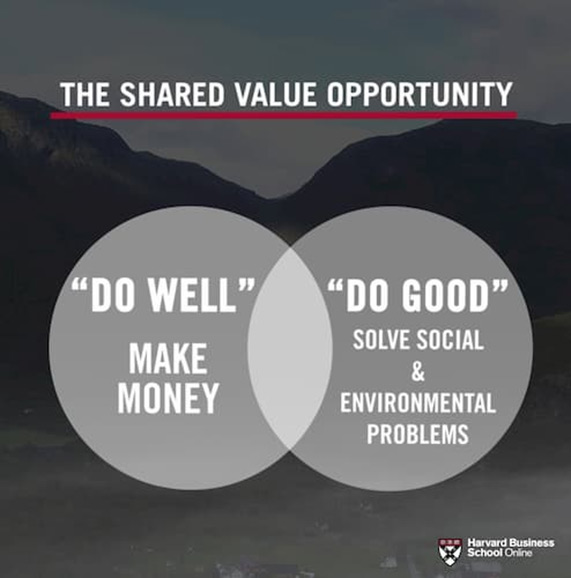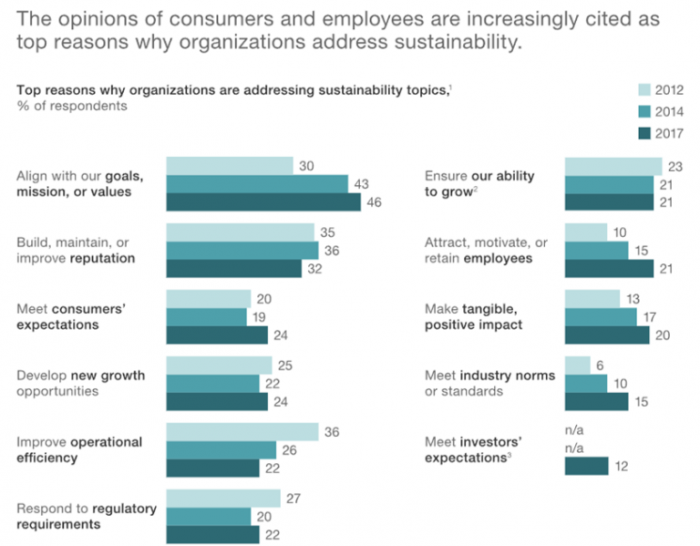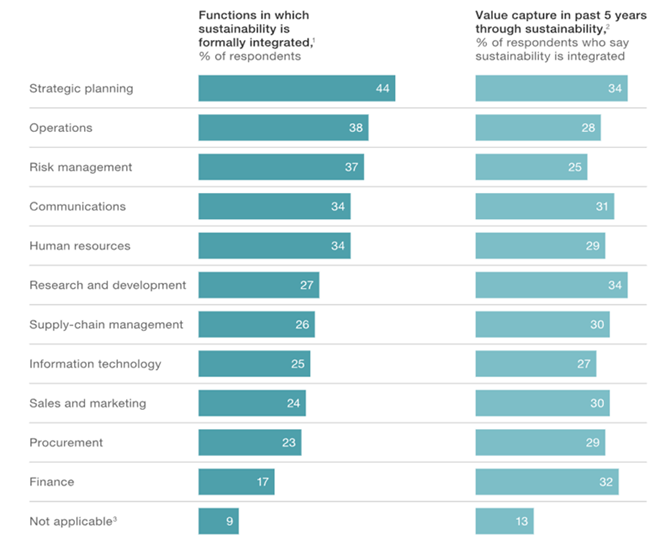
Article



Post recent UN COP26 event held in Glasgow, UK, the climate crisis, or our climate crisis to be precise, remains top of the national agenda for many global leaders.
While the world has witnessed promising developments in promoting a sustainable future, including both country- and company-level commitments as well as increased attention from investors, “net zero” carbon emissions is currently not in clear sight.
To get within the carbon emission reduction milestones agreed, the world has to move from focusing on what needs to happen to how best it can be done. By understanding the fundamental requirements in solving the corporate sustainability equation for example, the path(s) towards net zero will become ever clearer.
Sustainability can be defined as providing for our present needs without compromising the core needs of future generations. Beyond helping curb global challenges, sustainability can also drive business success.
“
Although 90% of executives believe sustainability to be important, only 60% of companies have a recognised sustainability strategy.
Sustainability is therefore becoming a core strategic element for corporations due to rapidly changing climate impact related perspectives within world markets, with the need for companies to address the gap between knowing and doing through embracing sustainable business practices in focus. Many companies have some form of a Sustainability Plan in place. However, many also lack deeper consideration as to how sustainability can enhance a company’s business model. What, then, does it take to transform sustainability into a competitive advantage?
Sustainable businesses are typically purpose-led organisations, created to inspire their people and partners to deliver lasting financial performance, equitable impact and societal value, consciously designed to earn and retain the trust of all stakeholders. Often, companies announcing their sustainability credentials are found wanting around implementation. This is happening because CEOs and their corporate boards are not as fully engaged as needed to be with sustainability strategies.
Research shows that where sustainability is formally integrated into at least one of a company’s core functions, they are at least twice as likely to report positive financial impacts as those who confirm sustainability isn’t integrated into any. According to McKinsey Research, employees surveyed confirmed the strongest motivating factors to adopting a sustainable mindset are to align with a company’s goals, missions, or values; build, maintain, or improve reputation; meet customer’s expectations; and develop new growth opportunities. Although 90% of executives believe sustainability to be important, only 60% of companies have a recognised sustainability strategy.

An increasing number of global investors today are using environmental, social, and governance (ESG) metrics to analyse an organisation’s ethical impact and sustainability practices. Investors look at factors such as a company’s carbon footprint, water usage, community development efforts and board diversity as important factors around which investment decisions are made. Companies with high ESG ratings have a lower cost of debt and equity, and sustainability initiatives help improve financial performance whilst fostering public support.
The overlap between social and environmental progress and financial gain is called the “Shared Value Opportunity”.
Businesses, regardless of market sector, require to describe and realise both the principles and strategies needed to ensure they can maximise the available corporate benefits as well as minimise the risks following transition to a sustainable economy, before it’s too late.
Let’s be clear, Sustainability is the direct opposite of “Greenwashing”, coined by New York environmentalist, Jay Westervelt in 1986. A term used when companies or institutions purport their activities or products to be environmentally friendly by superficially promoting a misinformation campaign. Greenwashing on a grand scale surrounds us all.
“
…organisations need to monitor the impact of their operations to ensure short-term profits don’t translate into long-term liabilities.
Sustainability in business generally addresses two main categories:
The goal of a sustainable business strategy is to make a positive impact on at least one of those areas. When companies fail to assume responsibility, the opposite can and will happen, leading to issues like environmental degradation, inequality, and social injustice.
Sustainable businesses need to increase focus towards consideration of a wider array of environmental, economic, and social factors when making businesses decisions. These organisations need to monitor the impact of their operations to ensure short-term profits don’t translate into long-term liabilities.

By “doing good” a business can have a direct impact on the company’s ability to “do well.”
As stakeholders demand more environmental, social and governance (ESG) efforts, regulations tighten and consumers increasingly expect brands to take action, organisations must now demonstrate that they are purposeful about sustainability, hold strong ethical standards and operate responsibly in everything they do.
Becoming a sustainable business, or improving current performance in acting in an environmentally and socially responsible manner, requires the same strategic approach as any other internal business initiative. By following the four steps below your company’s business strategy will align with the stated mission and thereby promote shared values;
High performing organisations pursue this sequence continually as circumstances change, as new stakeholder expectations arise and new organisational capabilities emerge. By building strong, mutually beneficial relationships with diverse stakeholders, leadership teams have the opportunity to improve financial performance.
There is no one sustainable business blueprint that applies to every company or market sector.
However, there are some common goals every business shares: to minimize waste and reduce carbon emissions. Business factors that influence sustainability priorities include investors, customers, resource shortages, consumer preferences, the ROI of projects, regulations, employee morale, recruitment and retention, and brand equity. All of these need to be taken into account in your sustainability strategy, tactics and prioritisation of initiatives.
The main areas to consider and questions to ask yourself when understanding what changes your company needs to make to improve its sustainability performance:
Integrating sustainability into core functions has a positive financial impact

When moving, building or expanding, look for buildings that have a high-efficiency architecture. These buildings typically have net-zero and passive construction methods that employ super-insulated shells equipped with solar and geothermal systems to reduce energy usage. Here are some areas to consider:
With your sustainability mission and strategy solidified, you’re ready to make important strides toward reaching your company objectives.
“
Now is the time for collaboration—for businesses to partner with their commercial support network, government and society to reimagine, rebuild and transform our global economy.
Steps that companies can take to adapt their approaches and capture greater value from their sustainability efforts include:
Develop sustainability strategies with the same rigor they use to develop the business strategy, and with the overall business strategy in mind. This enables sustainability efforts to deliver value, especially when translated into clearly articulated goals, metrics, and lines of accountability across the organisation (as the case in other areas of strategy development).
Companies with good governance structures to oversee and manage their sustainability efforts see better financial results from it. Value creation is nearly twice as likely when at least one formal governance structure is in place.
Increasingly businesses have teams focused on sustainability, while others use cross-functional leadership teams to drive their programs. Regardless of structure, there are some key success factors, including executive-team oversight and clear lines of accountability, that will support better financial and sustainability results. There is no “right” governance structure—an organisation’s setup needs to align with its overall sustainability approach and strategy.
Survey results indicate a gap between reasons for addressing sustainability and where in the company sustainability actions are pursued.
Since alignment with a company’s goals, mission, and values is the most common reason for action on sustainability issues, there will be an opportunity to embed sustainability programs into the business model. Most companies have a sizable opportunity to integrate sustainability into more of their core business functions, from finance to sales and marketing and HR, and for functional leaders to have their own sustainability action items—all of which would help close the gap between reasons and actions.
Creating a sustainability plan and program is a major undertaking. It can therefore be broken down into the following stages:
The plan is then ready to drive results and make the business a committed sustainable organisation. The path to 100 percent sustainability is long and may take testing a few different approaches for your business to make your greatest impact.
When objectives become a purpose, a powerful narrative is created driving your Company’s mission, allowing your business to create an actionable plan.
Economic, social and environmental sustainability is an essential element in today’s corporate environment. A corporate strategy focusing on sustainability increases brand value, will address consumer demands, increase efficiency, attract valuable talent and create new opportunities.
Investors, talent, and customers are all calling on organisations to seriously consider non-financial metrics within overall corporate metrics. However, as the current reporting landscape is widespread, with metrics ranging from CO2 to diversity, ethics, and governance, the non-financial metrics have evolved into what has become a complex challenge for organisations to tackle.
Developing a sustainability plan creates the foundation for an actionable Sustainability Program including organisational structure, accountability, project management, tracking and measurement. Improving your company’s sustainability performance is a complex and ambitious undertaking. Businesses have now received the message ever clearly, there now appears observable increases in the number of large corporations that include a chief sustainability officer (CSO). Not only are there more CSOs, but CSO organisational rank is also rising.
Now is the time for collaboration—for businesses to partner with their commercial support network, government and society to reimagine, rebuild and transform our global economy into one that benefits all stakeholder interests, in order to ensure longevity as well as viability of the sustainable plan your business creates. This transformation focuses on long-term value creation both for companies and stakeholders alike as well as the wider context, both environmental and human, within which they operate.
By focusing on sustainable, innovative and equitable employment models, sourcing transparency, investment in innovation and embedding sustainability in different functions of the business and across the commercial value chain, companies in the vanguard of Sustainability Planning will discover new sources of competitive advantage. Increasingly, companies and brands are turning to their partners—and to technology and innovations—to integrate sustainability and create meaningful change that’s good for business, society and the planet.
Our future demands it.
This article first appeared in Corporate Investment Times. Also available in PDF edition.